They say family that plays together stays together. Learn how Nike and two young creatives orchestrated a televised jam session that still rings off today.
Last month in Utah, basketball’s best laced them up for what most pundits processed as a glorified layup line.
The 2023 NBA All-Star Game gave way in to numerous questions about the integrity of the exhibition, wondering just who or what could change the tenor of the midseason spectacle that was once as much about highlights as it was pride.
In 2007, the creatives at Wieden+Kennedy confronted a similar struggle when rounding up Nike’s top-tier hoopers for a commercial clip intended to integrate the intensity of park play via an absolutely elite ensemble.
Just how could they make the game feel real because it actually was real?
There was one answer: Kobe Bryant.
“Sometimes when you’re shooting a commercial you go half-assed in it just trying to make the scene,” SHOWTIME Basketball’s Paul Pierce told Boardroom. “They were trying to capture moments where guys were really playing. Guys were really going at each other.”
Across the court, the Celtic star and a slew of future Hall of Famers were gathered not simply to play pick-up, but rather to sell shoes. Each All-Star laced up the Nike Air Force 25: an updated anniversary homage to the Swoosh’s prized pair that shifted an entire industry.
Enlisting the likes of The Truth, Rasheed Wallace, Kobe Bryant, and LeBron James, learn why roundball royalty shelved their signature sneakers and their cool all in the name of competition both on the hardwood and in the boardroom.
The One Twice Over
In the beginning, there was the Air Force 1.
Introduced by Nike in the Fall of 1982, the hiking boot-shaped basketball shoe was a paradigm shift where open-source innovation was concerned, taking the running category’s revered Air cushioning and implementing it for hardwood wear.
Aesthetically jarring while aspirational in price, the Air Force 1 became a status symbol both on and off the blacktop.
Over the course of the 1980s, big men like Moses Malone would swear by it in the paint while hip-hop heavyweights like Rakim christened it casually beneath Dapper Dan sweats.
From its ’82 induction all the way to its 25th birthday in 2007, the Air Force 1 was the most ubiquitous basketball shoe in pop culture, carrying more clout than Chuck Taylor and moving more units than Air Jordan.
To properly celebrate the Bruce Kilgore design’s quarter century of prominence, Nike went all in by double-dipping on the shoe’s dual dominance.
First, the Swoosh’s lifestyle umbrella looked to make it rain with luxury retro renditions and a tribute track toting the likes of Nas, Kanye West, and DJ Premier.
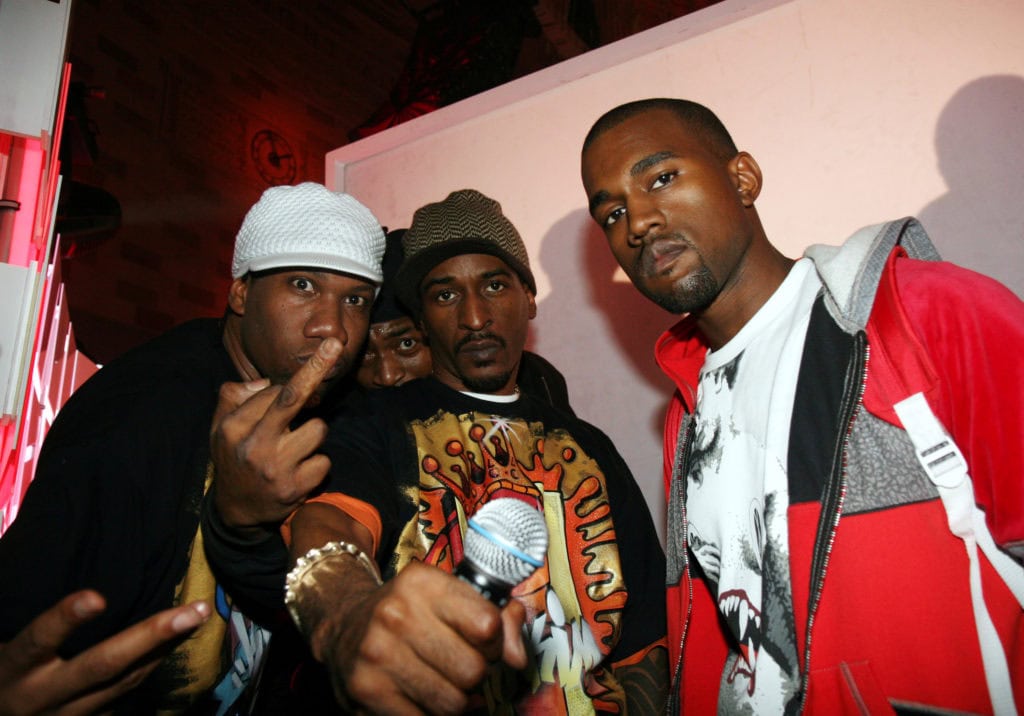
“We got hit up by Nike to celebrate the Air Force 1 25th anniversary,” FADER co-founder Rob Stone told Boardroom in 2022. “Our pitch to Nike was to not spend any money in media because the original Air Force 1 was word of mouth and hip-hop.”
Properly positioning the Air Force 1 in its cultural space, Stone signed on Rakim — the spiritual scribe of the shoe in the ’80s — while also attempting to tag one of the rappers best known for keeping the retro rendition hot in the ’90s and ’00s.
“We wanted Jay on the record, and we came close,” says Stone. “Jay would’ve done it, but he was asking for more from Nike, and we couldn’t close the deal.”
In the end, Stone and his team cooked up “Classic (Better Than I’ve Ever Been)” — an unforced ode to the AF1 that went on to earn a Grammy nomination and indirectly spawn the Nike Air Yeezy series.
Still, the Swoosh sought to celebrate Force in its basketball birthplace.
Enter, Wieden+Kennedy.
“We were with Wieden in New York and Portland was working on the basketball business,” former W+K Art Director Ricardo Viramontes told Boardroom. “Nike wasn’t pleased with the concepts, so they flew us to Portland. We were young kids with not much experience, but we loved basketball. We knew every single thing about basketball.”
Working alongside his friend and colleague, Andy Ferguson, the two 20-something hoop junkies started scripting an advertisement for Nike’s new Air Force 25: a performance product inspired by the original, yet redesigned for the modern game.
Set to outfit basketball’s biggest stars in the professional and college game, the stakes were high for all involved. Especially Viramontes and Ferguson.
“Our ECDs said, ‘We’re here if you need us, but you guys have to go figure it out,'” says Viramontes. “The sentiment at Wieden was, ‘If you fuck up you get fired, but we’re here and you have support.’ It was said jokingly, but maybe not.”
Trial by Fire
Bouncing back between NYC and Portland, Viramontes and Ferguson pitched the Beaverton brass on how to introduce Air Force to a new generation.
“Our passion for it kept us in the mix,” Ferguson told Boardroom. “We had so many presentations. Air Force 25 was easily the longest project I ever worked on at Wieden.”
Carrying the weight of a historic sneaker and the expectations of a billion-dollar brand, the youngsters at W+K presented Portland executives with a slew of ideas on how to repurpose the Air Force 1’s famed Original Six campaign to a growing, global audience.
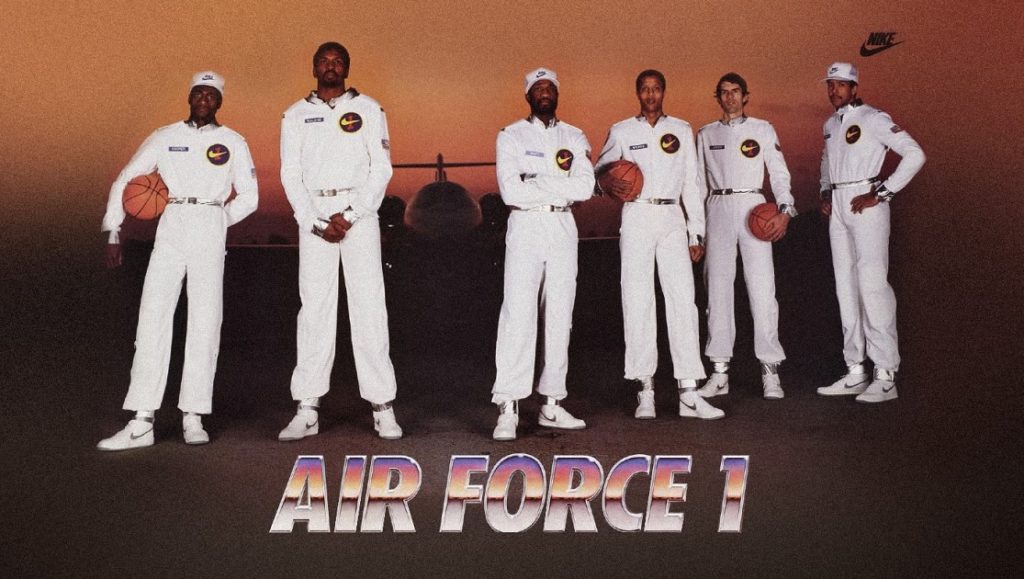
Not everything stuck, but Ferguson and Viramontes stuck with it.
“They could see our passion,” says Ferguson. “There was an international version, there was an old school version. But we kept going back to what could be cool in the basketball world. They wanted us to see it through because we got it.”
What was to be cool was a reimagined version of the OG campaign: rather than six star Swoosh athletes posing in front of a plane, ten top hoopers would take flight themselves in the ultimate pickup game.
It was not just competition among athletes at Nike that would make this ad resonate, but rather a raising wager to contest companies in the industry.
“At the time, Nike and Adidas were competing with each other in the commercial game,” says Pierce. “Adidas had Tim Duncan, KG, Chauncey Billups, T-Mac, and Gilbert Arenas. It was about who could put out the hottest commercial.”
To put out the hottest commercial, Ferguson and Viramontes headed west with an idea of what they wanted to do, but no idea if it’d actually work.
“We literally flew out to LA not knowing if we’d have enough athletes for the shoot,” Ferguson says.
“Usually for a commercial you want at least three weeks for pre-production. We had five days.”
The Shoot
Once Viramontes and Ferguson landed in sunny California, a dark cloud of doubt hung over the campaign and ultimately their careers.
Quickly, the two made a call to an adjacent industry vet capable of doing quick work that was culturally cool.
“We got Dave Meyers,” says Ferguson. “He said, ‘When I make music videos? I get 72 hours. We’ll figure it out.'”
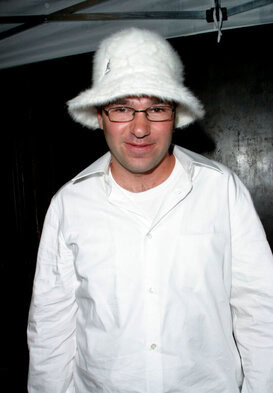
Meyers, a man capable of bringing the Magnolia Projects to TRL via “Back That Thang Up” while still nimble enough to work with Britney Spears, Celine Dion, and Slipknot, was not sweating the tight turnaround or beckoning call of directing hoop Hall of Famers.
“Dave’s plan of attack was, ‘Let’s let them play. Let’s also have beauty shots or close-ups. But we’re just going to roll out the ball and let them go after it,'” recalls Ferguson.
Ahead of schedule on set, Ferguson and Viramontes had the dream job of picking the team’s beforehand.
Playing fantasy GM, the two divided Chris Paul, Jermaine O’Neal, Tony Parker, Kobe Bryant, Paul Pierce, Steve Nash, Shawn Marion, LeBron James, Rasheed Wallace, and Amare Stoudemire simply with the prompt to play.
“They went after it,” says Ferguson.
“It got more competitive than it was supposed to get for a commercial,” Pierce says.
For Pierce, then a five-time NBA All-Star and advertising veteran where Nike campaigns were concerned, this was business as usual. Still, something was different.
“A commercial is supposed to be, ‘Let’s hit this shot, let’s shoot this scene,'” says Pierce. “I did other commercials with Jermaine O’Neal and Nike where it was more loose. But this one? It was more competitive than a normal commercial would be.”
As alluded to, much of that had to do with Kobe Bryant: a ruthless competitor with no off-switch.
As history tells it, Kobe couldn’t even play nice with peers when directors asked him to defend on beauty shots, making his co-stars actually beat him in one-on-one scenes.
The Black Mamba was, pun intended, as advertised. However, it was an underclassman on set who initially set the tone.
“It was Chris Paul’s first shoot ever,” says Viramontes. “Chris instigated it because he’s so serious. He was so competitive, he treated that game with the same leadership style — and he was the youngest one there that had never been on a shoot!”
“There’s a moment where he makes a side-eye at somebody,” Ferguson says. “And that was totally him in the game. Just him wanting to get after it.”
While wins and buckets were the focal points for the Wake Forest floor general, other athletes were using the time on set to inquire about not the Second Coming campaign, but their second careers.
“Kobe was so curious,” Viramontes says. “Him and Amare were asking, ‘What cameras are those? How does this work? What is this? What is that?’ They were active in wanting to know what the process was. The other guys were super chill — until the competition happened.”
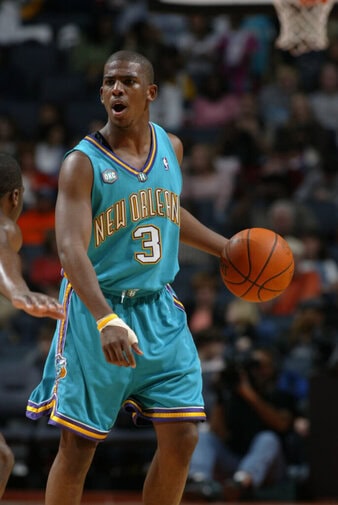
That competition — the actual pickup game in the commercial — continues to carry subplots of its own.
“I don’t remember 100%, but I think we had a wager on the game,” says Pierce.
Though urban legend alludes to an outsized bag incentivizing the pace of play, the folklore is perhaps better not knowing.
Whatever happened — whether that be the spark lit by Chris Paul’s outsized competitiveness or elite talent eyeing an outlandish prize — the proof was in the pudding of the final product.
“On these shoots? You never get guys trying,” Ferguson says. “They lower the rims and everyone is going half speed if that. But this one? They were actually playing.”
For Ferguson, he remembers just how dynamic a young Amare Stoudemire was on court, outclassing the competition fluidly with a barrage of jams and jumpers alike.
For Viramontes, it was another big budget big idea that still stands the test of time.
“You never know which one of these things is going to be the thing,” says Viramontes. “It turns out that the song was the thing.”
The Score
Basketball’s best pickup games are soundtracked not just by trash talk, but by an unfiltered soundtrack of the rawest music out.
When selecting the tune to back the commercial and modernize the Air Force 1, the Beaverton brand bet big on the youth, going all in on a 25-year-old talent oozing with upside.
Not LeBron James — Nike’s $90 million golden goose and basketball’s best A&R — but LaRon James: the rapper better known as Juelz Santana.
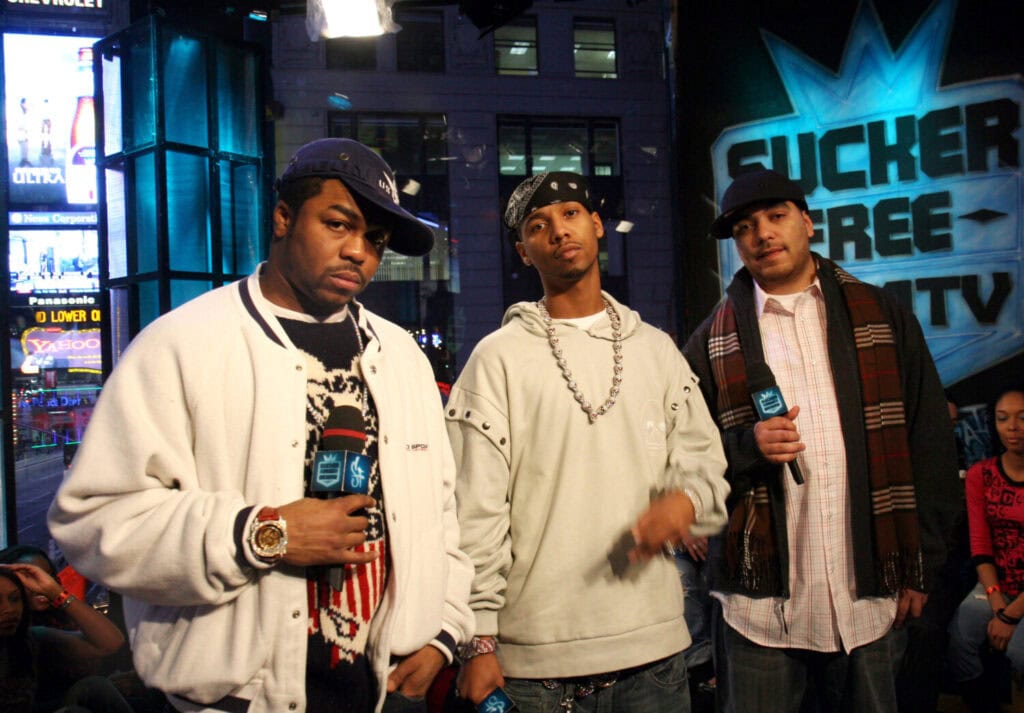
Hailing from Harlem, Dipset’s diaper dandy had risen from the ranks of teen phenom to a walking platinum single.
To make the record ring off at the highest heights, the brand brass rang rap’s resident hitmaker.
“I’d done a lot of work with Nike,” Just Blaze told Boardroom in 2022. “They brought up the anniversary of Air Force 1 and were like, ‘Yo, are you interested?'”
The answer? Yes.
From the soul samples for The Blueprint to ascending Santana via placement on “Oh Boy,” Blaze brought a level of credibility and artistry that few in the industry could match.
Inevitably, Santana spoke to the braggadocio of the original Air Force 1 and the sheen of its shiny successor, even if the campaign’s timing was tense.
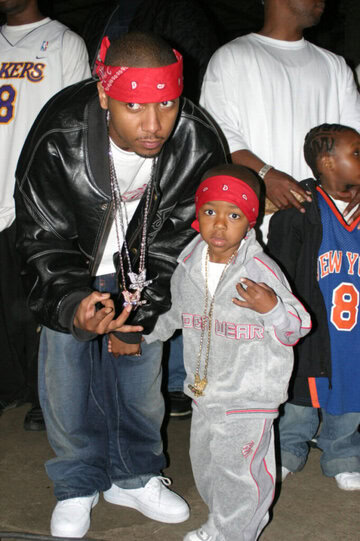
“This was after the Rocafella split, so things were a little weird between the Rocafella side and the Dipset side,” Just said. “But business is business. He was still one of the hottest artists in the street and he and I had no problems or beef.”
If impossible took a week for The Blueprint, difficult only took 24 hours when working with Santana on the Nike track.
“We went in and knocked it out within a day,” says Just. “It was quick and easy. A lot of time the best projects don’t have a lot of back story, it’s everybody bringing their A-game to the table.”
Another story of big budgets and tight turnarounds, Just Blaze and Juelz Santana went in the booth with the W+K creatives offering objectives.
If coaching Kobe through scenes made for a great day at an airplane hangar, what would a field trip to Baseline Studios have in store?
“It was exceptionally fun to work with Just Blaze and to work with Juelz,” says Viramontes. “We gave Juelz a brief of the sentiment that we wanted to communicate and it’s up to him to interpret that in the way that he says fit. But we also had to play a role in approving the lyrics which was a funny thing. For the second verse, he’d look up at us like, ‘Is this good to go?'”
Building the beat, Just Blaze brought out an ancient death chamber march to mount the drama.
The thumping corresponds with the choreography of the commercial as the 10 hoopers stomped into the frame.
“What we made was basically a music video,” says Viramontes. “What most people saw was the 60- or 30-second clip on television, but we made a music video with Juelz and Just doing the full track. It debuted on MTV. We had CDs that we distributed as a single. We treated it as it was a real song. The Cleveland Cavaliers and other NBA groups used the song.”
Making the most of Nike’s endless funds, Blaze brought his A-game not just with the beat, but by requesting a string ensemble to create the track.
“That was a completely live orchestra, at least a 30-piece orchestra,” says Just. “Rob Mathis, the conductor and arranger I worked with, he could take whatever I said in 30 seconds and have the whole orchestra playing it.”
“From a creative standpoint, it was dope that Nike gave me the freedom,” Just says. “If it had been a record label and I asked them for a 30-piece orchestra? A lot wouldn’t see the value in that.”
To this day, “The Second Coming” single still plays at stadiums and ballparks, living far beyond Nike, basketball, or the Air Force 25.
“I’m a Phillies fan,” says Ferguson. “I went to a playoff game and Ryan Howard, who was their MVP, had the song as his walk-up music.”
The Legacy
From a pinnacle product standpoint, the Nike Air Force 25 was the on-court predecessor to 2008’s Hyperdunk.
Across the NBA, the likes of Kobe, LeBron, and Amare only wore the Air Force 25 for that fabled commercial, quickly returning to their own namesake sneakers while at work.
Still, the talent at the shoot recalls just how powerful that Swoosh-sponsored pickup run was.

“To have this many stars in one commercial? You don’t see these type of commercials,” says Pierce. “Usually shoe brands individualize their endorsee. To bring it all together was dope. A lot of guys in there had their own shoes, but this? This is the squad. These are the important guys at Nike right now. We’re gonna put ’em all in one room, just to show how strong our brand is.”
For Ferguson and Viramontes, the untested talent at W+K, the Air Force 25 campaign was a coming-of-age story for their own creative careers.
“It was the first thing I worked on that felt like it really penetrated culture in a way that was exciting,” says Ferguson. “Saturday Night Live did a spoof. Anytime you get into content creation? The most you can hope for is people to pay attention to it and respond.”
“It was very transformative for us,” Viramontes says. “We were shocked, but we went and figured it out. Because of our passion and youth? We knew about Just Blaze. It was up to us. That idea of accountability was so powerful. Andy and I went on a tear after that for a year or two. We had like five or six hits because we had that momentum.”
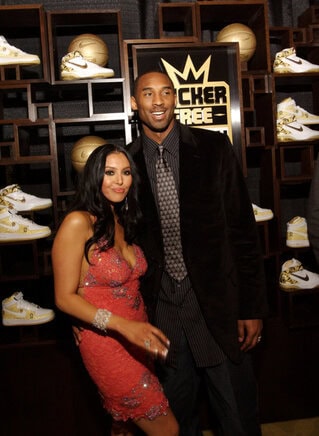
From Jordan Brand‘s Leroy Smith viral video series to ESPN ads with Jeff Van Gundy, the W+K combo continued to thrive off the success of the Second Coming commercial.
Though Nike’s mass-marketing campaign included six-foot sneakers in front of Madison Square Garden and an online video editor to make your own Second Coming highlight mix, it was the title track itself that impacted culture from a hip-hop lens, much like the original Air Force 1 itself.
“My only regret is that Nike pressed it up on CD,” says Just. “But I should’ve put in my contract that they pressed it up on vinyl.”
As talking heads in the hoop space look to fix basketball’s biggest exhibition extravaganza, perhaps they should look no further than SHOWTIME’s Paul Pierce.
The Truth appeared in ten actual All-Star Games yet still recalls an unorthodox ad that was oozing with energy fans, players, and pundits desire.
“Being around the top Nike guys?” says Pierce. “Who weren’t only Nike guys but future Hall of Famers? It was almost like an All-Star Game in a commercial.”